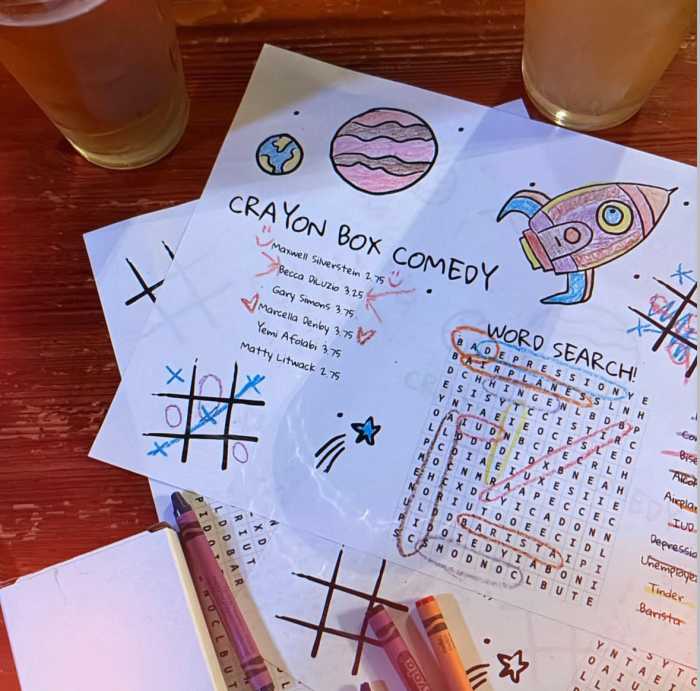The launch of the Coney Island ferry has been pushed back one year to late 2022, and the city Economic Development Corporation, who heads the project, says dredging activity on Coney Island Creek will not resume until next summer.
In a Dec. 28 letter to local Community Board 13, the city agency claimed that, though they need to continue dredging to make way for the coming ferries, they cannot do so again until Summer 2022, due to a moratorium to protect winter flounder and horseshoe crabs from Jan. 1 through June 30.
“We continue to work with Federal and State regulators to ensure our work is done safely and correctly and does not pose any dangers to the marine environment,” an EDC spokesperson said in a statement to Brooklyn Paper. “To this end, we cannot resume in-water construction on the landing until an NYSDEC moratorium to protect winter flounder and horseshoe crabs is lifted on July 1. With this new timeline, we expect to launch NYC Ferry service in Coney Island in late 2022.”
The moratorium comes as much of the other elements of the ferry project are finished, such as the construction of the new ferry landing and rehabilitation of the nearby fishing pier, according to the letter.
EDC further pledged in the letter to work with the surrounding community so that they are aware of the dredging schedule and scope in advance of restarting the job. Agency heads maintain that they are working with EDC’s regulators — US Army Corps of Engineers and the state Department of Environmental Conservation — to ensure all dredging complies with environmental and safety regulations.
Assemblymember Mathylde Frontus, who has vocally opposed the creekside ferry, told Brooklyn Paper that the service delay prompted a “sigh of relief,” as it gives the community more time to advocate for an oceanside ferry that doesn’t come at a cost to the surrounding community.
“Coney Island wants a ferry, Coney Island deserves a ferry, we’ve said all along it’s a matter of doing it the right way, we don’t want it any cost, we don’t want it at the expense of our health,” she told Brooklyn Paper. “What this extra year does not it gives us a little breathing room to continue to conduct our advocacy.”
Frontus said her group, Coney Islanders for an Oceanside Ferry, is going to continue monitoring work on the creek, despite the expected winter pause, and meet with the incoming administration in an attempt to gain their support.
“We are going to keep taking pictures and recording every single day, and we’re going to reach out to the new leaders across our city — we are going to meet with the new mayor, the new borough president, the public advocate,” the pol said, “and we are going to make sure people understand what we are saying.”
News of the delayed opening wasn’t relished by all — especially those who just last month pointed powers that be to dredgers violating protocols and video showing toxic material being dumped into the waterway.
Residents have long-feared that digging up the creek’s toxic sentiment will negatively impact neighbors of the creek and Kaiser Park, where the ferry landing is installed on its western edge — many of whom are vulnerable, low-income families.
In response to activists’ calls in November, EDC ceased all work with the subcontractor and launched an investigation into the matter. The state Department of Environmental Conservation also issued the city agency a violation.
Local environmentalist Ida Sanoff, also a member of Coney Islanders for an Oceanside Ferry, said she suspects this isn’t the last time dredging in the Coney Island Creek will be extended because of migrating sand in the waterway, which will keep filling the ferries’ path no matter how much dredging is done.
“They got a big problem with this location,” she told Brooklyn Paper.
Sanoff points to the EDC’s addition of a third dredging location in the creek to their scope — something, she argued, doesn’t typically happen in projects of this type — and that the agency’s permit with the US Army Corps of Engineers allows for continued dredging as needed once the initial construction is complete.
“All of a sudden at the end of fall, they said, ‘Oh, we just figured out that there is yet a third area we need to get cleaned out,'” Sanoff alleged, “and that gives you an idea of how fluid this situation is — and what a big problem sand migration is here.”
























